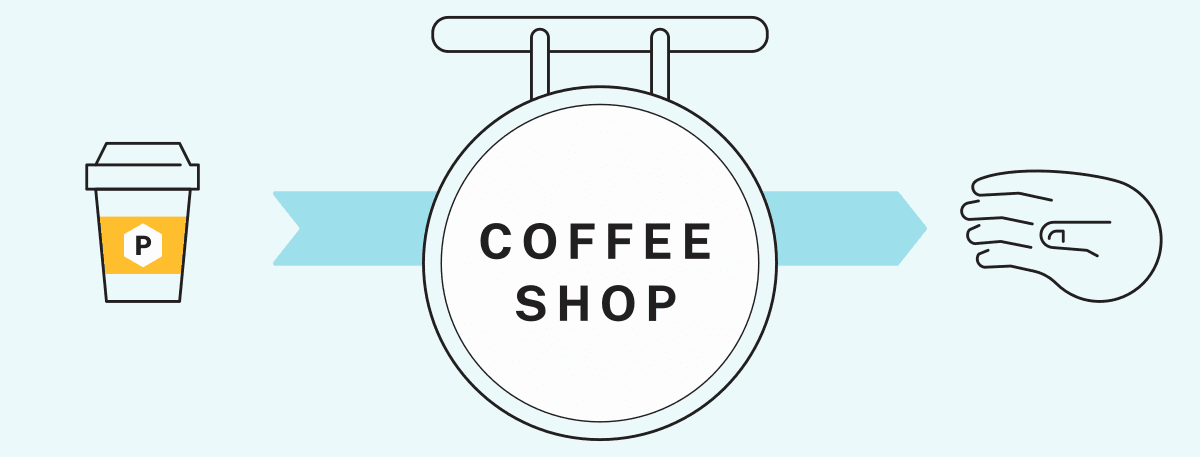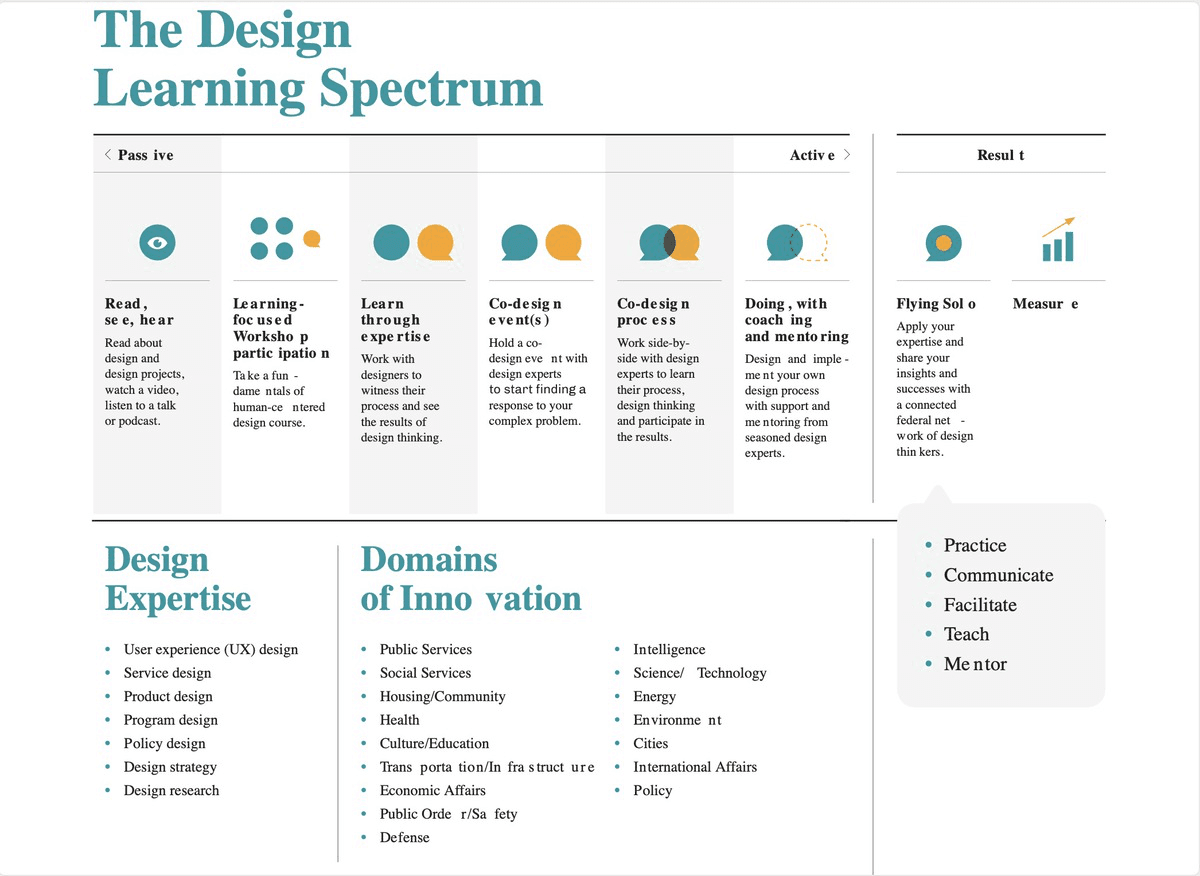
Services
Reading time: 2 minutes

According to economists, services are items that are not manufactured, and typically delivered on-demand. They tend to be ongoing, or things you return to again and again, unlike the single-instance events that characterize products. Going back to our coffee shop example, the touchpoints of the transaction, such as the culture and community of a coffee shop, are components of the shop’s service, which is ongoing and intangible. While the coffee you drink is a new product every day, the coffee shop provides the ongoing service of stocking, making, and selling coffee.
The public sector is primarily a service provider. The services of governance, civil and criminal protections, environmental and food safety regulations, and so many others, are the primary reasons for the public sector’s existence.
Human-Centered Design Capacity Building
While the public sector provides many public-facing services, it also provides services to itself in many forms. One of those forms is that of education and capacity building for the workforce. An example of this type of service is The Lab at OPM and the Veterans Experience Office’s (VEO’s) Human-Centered Design (HCD) Capacity Building program, established in 2018.
This program was a match between The Lab’s mission to provide education and training to all levels of government as well as private sector professionals and VEO’s increasing need for human-centered design capabilities.

A description of the different learning modalities and areas of expertise identified by The Lab as means by which to gain mastery in the Human-Centered Design practice.
Since its establishment in 2015, VEO had relied almost exclusively on a combination of designs from The Lab at OPM and HCD contract resources to source expertise in applying HCD to solve complex problems. As the designated CX organization in VA, VEO sought to increase its HCD capacity through this program to deepen VEO’s understanding of Veteran needs and develop innovative tools and solutions to meet those needs. This program was also an opportunity for VEO and The Lab at OPM to build an HCD capacity building program that could be leveraged by other Agencies in support of the President’s Management Agenda (PMA), Cross-Agency Priority (CAP) Goal of Improving Customer Experience with Federal Services. This program was designed to increase VEO’s capacity to provide HCD support to VA and provide a framework for other Agencies to use as well.

The HCD Capacity Building program is an example of a service that one agency (OPM) provides to another agency (VA). The exchange consisted of knowledge and practice, and return on investment was long-term and strategic.

